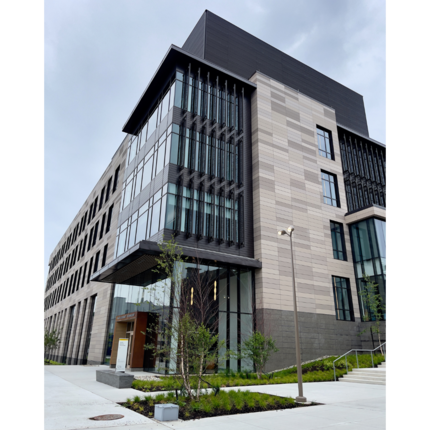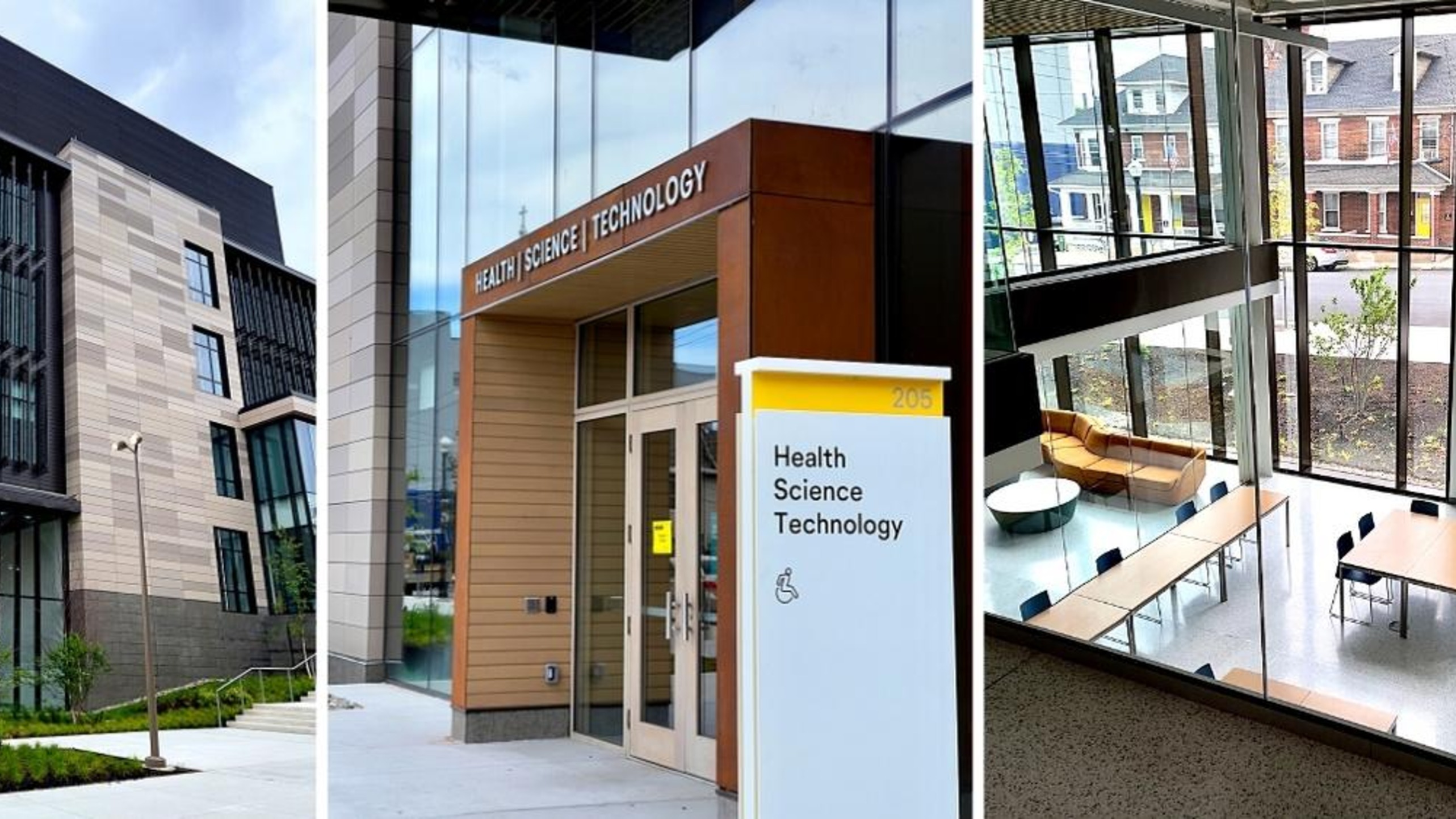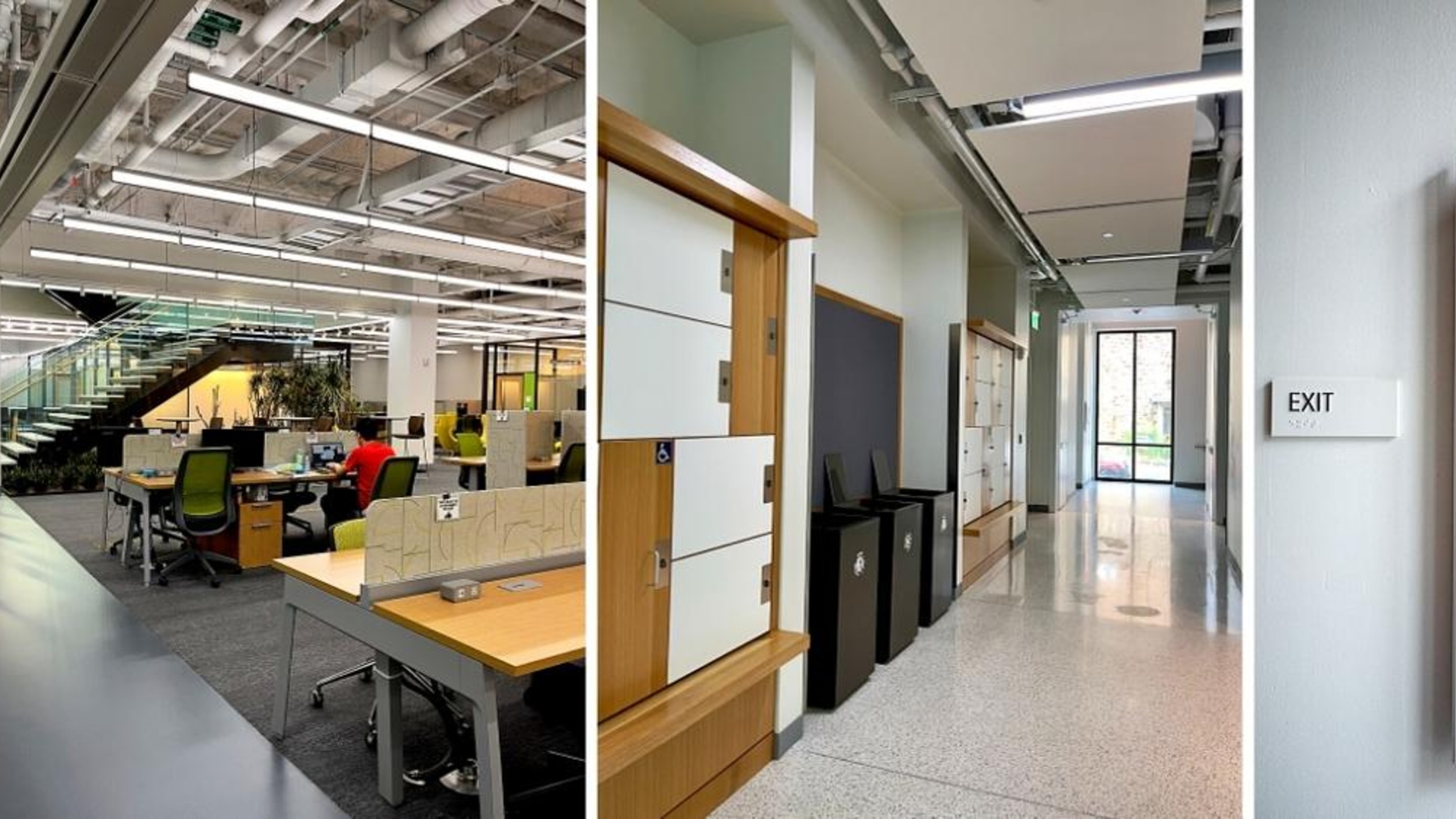
Health, Science, Technology Building is the First Lehigh Building Seeking Both LEED & Fitwel Certification
Opened in the Spring of 2022, the Health, Science, Technology (HST) building is the first new building to pursue both LEED Gold and Fitwel Three-Star Gold Certification. LEED (Leadership in Energy and Environmental Design) by the U.S. Green Building Council is the most widely utilized green building rating system globally. According to their website, LEED certification is a “framework for healthy, efficient, carbon and cost-saving green buildings” and “is a globally recognized symbol of sustainability achievement and leadership” (LEED Website).
Fitwel Certification was developed by the U.S. Centers for Disease Control (CDC) and Prevention and U.S. General Services Administration. It’s “the world's leading certification system committed to building health for all®" (Fitwel Website). Fitwel seeks to implement a vision for a “healthier future where all buildings and communities are enhanced to strengthen health and well-being” of the individuals who use the building (Fitwel Website).
To pursue both LEED & Fitwel certification, HST was designed with a myriad of features that are both sustainable and promote health and wellness. Sustainability features include water and energy conservation measures. HST has heat-shift chillers, a neutral-temperature supply air design, radiant perimeter heat, chilled beams, LED lighting, high-efficiency condensing boilers, and an improved envelope that greatly reduces air leakage. Just by the use of the neutral temp air chilled beams they are aiming to achieve a “44.5% energy savings” (Joe Klocek). And with the water reclamation and air-cooled chillers, they hope for a “76% water reduction” (Klocek).
Health & Wellness features include a focus on occupant comfort as well as promoting healthy choices. Thermal comfort is achieved by the use of neutral temperature air systems, perimeter radiant heat, and heat-gain reduction through the use of screen walls. The interior gardens contribute to a biophilic design that promotes connectivity to the natural environment.
Natural daylighting is prioritized and maximized by the extensive use of exterior and interior glazing and circadian lighting controls. Shared occupiable spaces are intentionally placed around the perimeter of the building floors where natural light enters through large glass panels. The prioritization of natural light also offers those in the building the bonus of end-to-end exterior views, corridors that terminate with windows, and views in unlikely places.
The design of the building specifically encourages healthy choices and the fostering of community. The stairs are centrally located in the building and signs are placed near all the elevators which read “Burn Calories, not Electricity. Take the Stairs”. The open location of the stairs, as well as the multiple gathering spaces and flexible workplaces (which are demountable and reconfigurable), promote the creation of an active, evolving, community.
In addition to the building designs being in line with LEED and Fitwel certifications, they are also in line with Lehigh’s Sustainability Strategic Plan 2030, which outlines a few key goals for HST and for the use of HST as a pilot model to use in future buildings and renovations. The Sustainability Strategic Goals HST achieved and progressed included:
Campus Operations Goal 28: Utilize the shared research and workspace in the Health, Science and Technology Building as a pilot model and implement in future new buildings and renovations.
Health & Wellness GOAL 14: Utilize certification standards such as Fitwel for application in buildings throughout campus to promote and integrate best practices in occupant health and wellness.
Health & Wellness GOAL 15: Utilize permanent plantings inside of the Health, Science and Technology Building as a pilot for implementing biophilic design in other buildings and renovations.
Joe Klocek, the Interim Director of Planning, Design, and Construction with LU Facilities, says “by using HST as an aggressive sustainability model, the University has been able to test out policies and real-world applications to understand what does and doesn't work for Lehigh projects and our community. HST will continue to show us how a sustainably built learning environment can evolve”.
Official notification of Fitwel Certification is expected in the next few months.


